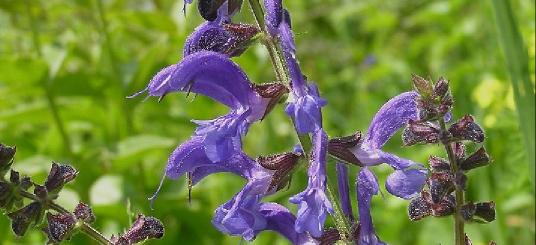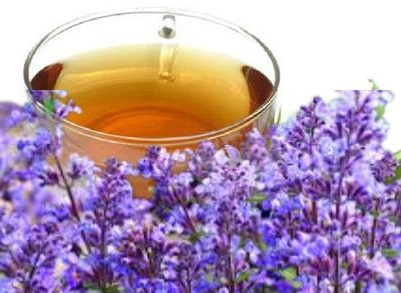Sage tea is rich in vitamins A, B3, B6, B9, E, and K, as well as the minerals copper, zinc, iron, calcium, manganese and potassium. Sage tea also contains small amounts of calories, fat, fiber and protein. It also contains polyphenols, caffeic and ellagic acid, which are defined as natural chemicals found in the plant. Sage, whose Latin name is Salvia officinalis, is a type of medicinal and aromatic plant from the honeydew family. There are more than 5 thousand different species of sage, which is an essential oil and spice plant, around the world. The plant, which grows in the Middle East and Mediterranean regions, is also widely grown in our country. Salvia officinalis, also known as medicinal sage, is the type of sage widely used in the pharmaceutical industry. Does sage grow well in pots? Does sage spread in the garden? Does sage grow back every year? How do you care for a sage plant?
What are the health benefits of sage?
What are the side effects of sage? Is sage tea good for weight loss? Does sage tea make you sleepy? Does sage tea make you lose weight? Does sage tea have any side effects? What are the side effects of sage? Flowering Time: Salvia fruticosa March to July, Salvia sclarea May to August. Sage, whose Latin name is Salvia officinalis, is a type of medicinal and aromatic plant from the honeydew family.
WHO SHOULD NOT CONSUME SAGE TEA?
Some side effects may occur in excessive consumption of sage tea. Drinking sage tea by individuals allergic to plants belonging to the genus Salvia may cause allergic reactions. Although it is known that sage tea can be beneficial in digestive system disorders such as nausea, excessive drinking may cause burning sensation and pain in the stomach. Although side effects vary from person to person, it is considered safe to drink 3 cups of sage tea daily and it is recommended not to drink more than 3 cups daily.w? Where is sage best grown?

The leaves and young branches of the plant are usually collected before flowering in shady places. used by drying. They are perennial herbaceous plant species that grow up to 1 m. Leaves simple or triloped or small lateral segment, ovate oblong approx 2-5 x 0.75-2 cm. irregular granulate, lower face white tomentosa hairy, petiole 0.5-3 cm. Verticillata with 2-8 flowers almost at the top.
What is sage tea? Sage, which is defined as Salvia officinalis in the Latin language, has been evaluated as a medicinal plant throughout history and has been prepared and consumed as spice, tea, oil in order to prevent and treat many diseases. It is known that the leaves of the plant, which is also used in perfume and soap production due to its aromatic smell, are used in medicine. Sage tea, which is from the family of honeybabagiller, which also includes rosemary, thyme and mint; It is rich in vitamins A, B3, B6, B9, E, and K, as well as the minerals copper, zinc, iron, calcium, manganese and potassium.
- Good for Throat Inflammation: It is very useful for mouth and throat pain, gingivitis and laryngeal problems.
- Relieves Fatigue: When the tea of sage flower is drunk regularly, it takes the tiredness of the body. You feel vigorous and strong.
- Prevents Paralysis: Like Sage Lavender, it prevents night sweats and paralysis. It also prevents sleep paralysis to a large extent.
- Good for Spinal Cord Problems: It is good for diseases such as spinal cord problems, cramps, body gland diseases, arm and leg tremors.
- Relieves Liver Disorders: Tea made from sage flowers is recommended to be used in liver complaints, disorders caused by damaged liver, and stomach and intestinal gases.
- Activates the intestines: Tea made from sage flower cleanse the blood, increases appetite, expectorant, cuts diarrhea, and makes the intestines work.
- Heals Wounds: In addition to all these, the leaves of the sage flower, which is known to be good for insect bites, are crushed and applied to the wound and the healing of the wound is accelerated.
Information about sage flower
What is flowers sage used for? Are sage flowers safe to eat? Where is sage found? Are sage flowers poisonous? There are more than 5 thousand different species of sage, which is an essential oil and spice plant, around the world. Salvia officinalis, also known as medicinal sage, is the type of sage widely used in the pharmaceutical industry. Salvia lavandulifolia, known for its memory-enhancing effect, grows in Spain and Southern France. Sage, also known as bitter apple grass and tooth grass in some regions, is a shrub-like plant with an aromatic scent, with green leaves close to gray and blooming purple, purple, blue and pink flowers. Throughout history, people have used sage to treat pain, diarrhea, digestive system problems, colds and mental problems. What are the health benefits of sage tea? How often can you drink sage tea? How does sage help the body? What is the best time to drink sage tea? Does sage tea make you sleepy?
In limited studies, it has been seen that sage reduces symptoms such as irritability and hot flashes, which are the symptoms of menopause, lowers cholesterol and blood sugar levels, and contains plenty of antioxidants. Sage, which is thought to be protective against brain health problems such as Alzheimer’s, is also thought to be preventive against upper respiratory tract infections. Sage, which scientific research is still very new, is a plant that has a great potential for health.
What is sage? Vitamins in sage
What is sage vitamins good for? What is a supplement for sage? Does sage increase estrogen? Are sage supplements safe? It is known that the leaves of the plant, which is also used in perfume and soap production due to its aromatic smell, are used in medicine. Sage tea, which is from the family of honeybabagiller, which also includes rosemary, thyme and mint; It is rich in vitamins A, B3, B6, B9, E, and K, as well as the minerals copper, zinc, iron, calcium, manganese and potassium. Sage also contains small amounts of calories, fat, fiber and protein. It also contains polyphenols, which are defined as natural chemicals found in the plant, caffeic and ellagic acid.
In which situations should sage tea not be consumed?

When should you avoid sage? Does sage tea have any side effects? What are the side effects of sage? Who should not take sage? How much sage is bad for you? Although sage has been known as a medicinal plant for years, there has not been enough research on this plant. For this reason, it is recommended that healthy people consume herbal tea and herbal remedies such as safe in moderation. It is recommended that people with chronic diseases consult the physician about sage consumption. All kinds of herbal medicine and tea, including sage, should not be consumed before and after the planned surgeries.
Since sage is known to stimulate the uterine muscles and prevent milk production, it is extremely inconvenient for pregnant women and nursing mothers to consume sage. Consumption of sage by children under the age of 6 may cause health problems. It should not be consumed with drugs taken to stop diabetes, Alzheimer’s and seizures.

Does sage grow back every year? How do you care for a sage plant?